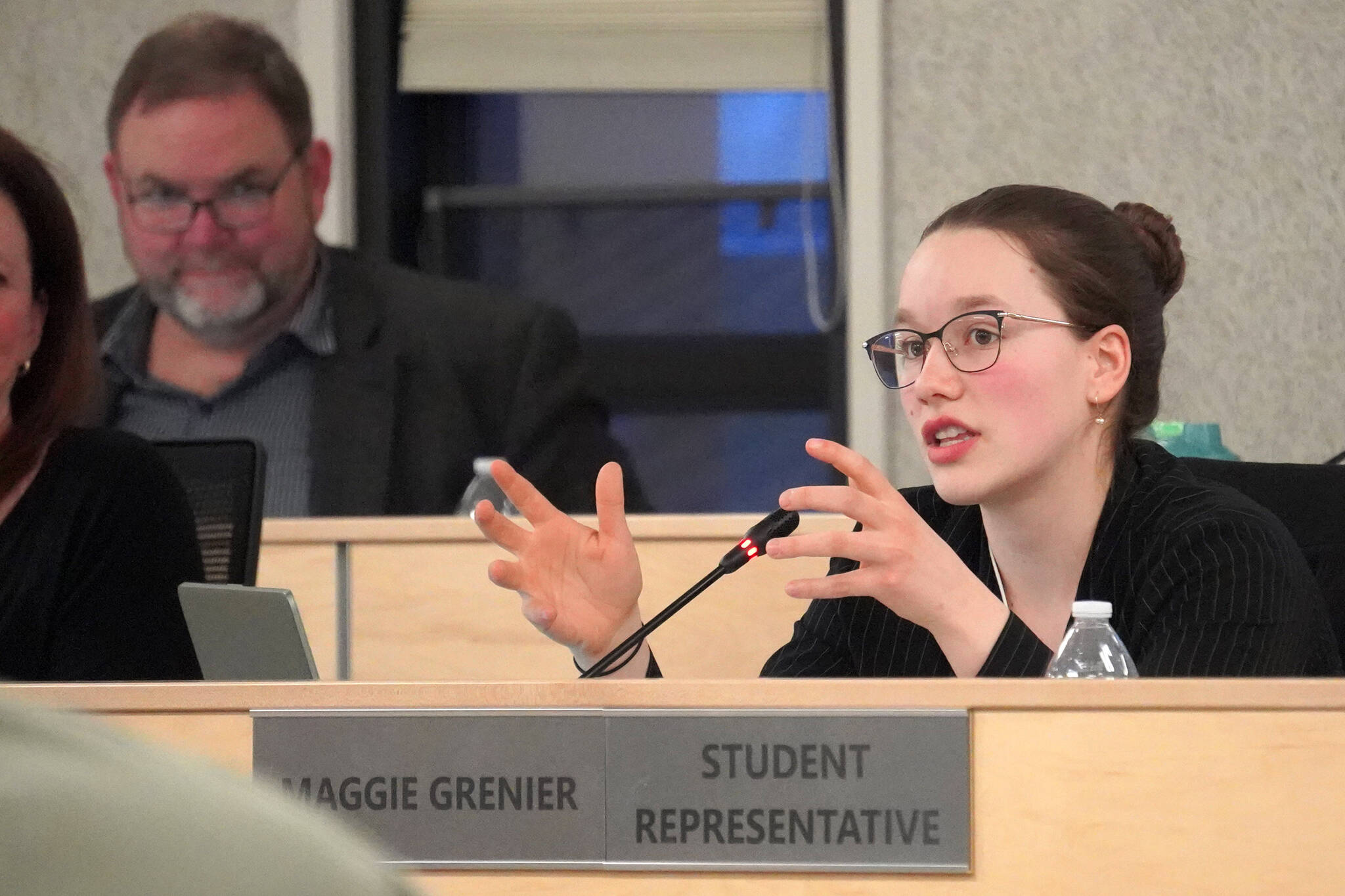The school district plans to move forward with a budget that assumes no new state funding for K-12 education for fiscal year 2025.
During a meeting of the Kenai Peninsula Borough School District’s School Board on Monday and a joint work session between the board and the Borough Assembly on Tuesday, the board explained their intention to move forward under one of three proposed budget scenarios and requested funding from the borough to the maximum allowable amount.
Facing a budget deficit of $13.7 million for the fiscal year 2025, which starts on July 1, 2024, and ends on June 30, 2025, the district’s finance committee last month outlined three budget scenarios based on potential funding from the state in terms of increases to the base student allocation, or the amount of money the district receives for each student. Those scenarios included a $0 increase, a $340 per student, or a $680 per student increase.
It is the first scenario — repeatedly described as the “worst-case scenario” by board members on Monday — which will be used to proceed in crafting a budget to be sent to the assembly later this month.
During the work session, representatives of the board and of KPBSD administration summarized the realities of the budget they are proposing. The starting line, they said, is roughly a $5 million reduction from the last fiscal year, when one-time funding was provided by the state. With no guarantee of any additional funding from the state — and especially following Gov. Mike Dunleavy’s veto of Senate Bill 140 — they said “this is all we can depend on.”
KPBSD Superintendent Clayton Holland said Tuesday that though that is the budget they need to proceed with, he does still anticipate seeing some sort of increase in funding. The issue, he said, is that funding may not be detailed or guaranteed until months after they need to have their budget complete.
Proceeding with a budget that assumes no additional funding will allow the district to begin hiring 28 teachers for the next fiscal year. If funding is approved by the state, the budget can be amended to reverse the cuts — as happened last year.
The budget scenario being pursued by the board assumes no new funding and includes increasing the pupil to teacher ratio by one in most classrooms, deferring upgrades to curriculum and some equipment, cutting extracurricular travel, reducing support staff by 10 days and closing school pools and theaters. This plan also requires drawing upon the entirety of the district’s unassigned fund balance and again asking the assembly to fund the school district to the cap.
“The intent and the hope is that this doesn’t happen,” Holland said. “I believe there will be funding of some kind.”
The proposed cuts under that scenario do everything possible to avoid impacting classrooms.
During the joint work session, Board President Zen Kelly told the assembly they are “asking again for quite a bit of support.”
School board member Jason Tauriainen said that under the present scenario — expending uncommitted funds and deferring curriculum — creates an unsustainable situation for the district.
Members of the assembly asked whether the district had considered consolidating facilities and whether recent letters from the U.S. Department of Education that say the state owes the school district almost $10 million in COVID-19 relief funds mean that a large influx of money could be arriving.
Holland explained that closing schools isn’t a tenable long-term solution, as it would ultimately lead to further reductions in funding down the line. He said that he had been in contact with State Department of Education and Early Development Commissioner Deena Bishop and that the state’s position on the money is that they haven’t done anything wrong — they can’t count on that funding materializing.
More information about KPBSD’s budget process can be found on the district’s Board Docs website. Users can still access the district’s budget balancing software at go.kpbsd.org/fy25-balancingact.
Reach reporter Jake Dye at jacob.dye@peninsulaclarion.com.

